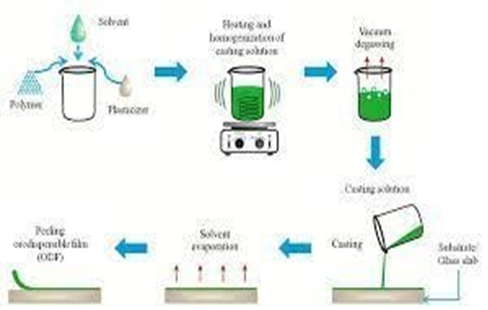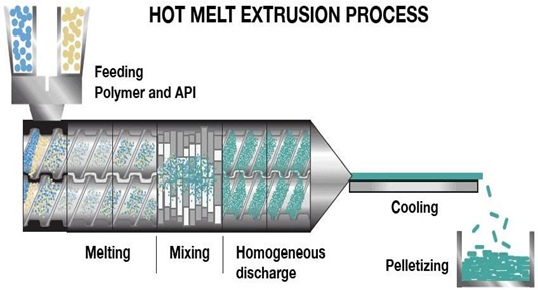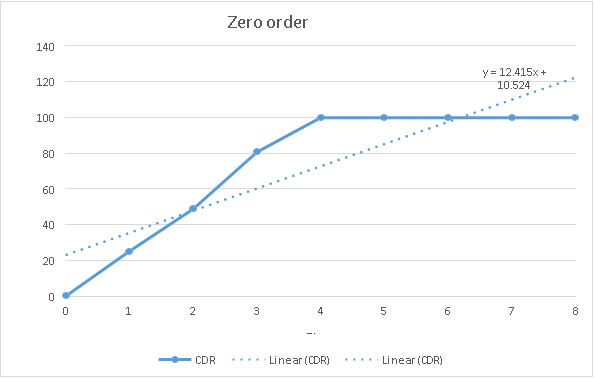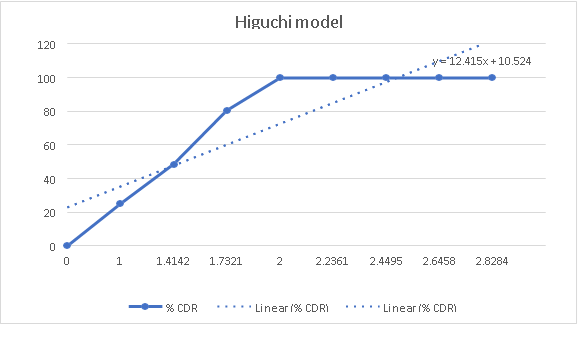Research Article
- Shiva Kumar Yellanki ID 1
- Mukesh Chauhan ID 1
- Jamjala Naveen ID 1
- K Kishore Kumar Reddy ID 1
- B Anitha ID 1
- Chinthala Cheruvu Chaitanya ID 1
Department of Pharmaceutics, Geethanjali College of Pharmacy, Hyderabad, Telangana, India.
*Corresponding Author: Shiva Kumar Yellanki, Department of Pharmaceutics, Geethanjali College of Pharmacy, Hyderabad, Telangana, India.
Citation: Shiva Kumar Yellanki, Mukesh Chauhan , Jamjala Naveen , K Kishore Kumar Reddy , B Anitha and Chinthala Cheruvu Chaitanya. Formulation and Evaluation of Fast-Dissolving Films of Minoxidil. J. Clinical and Medical Research and Studies. 3(2) DOI: 10.59468/2836-8525/056.
Copyright: 2024 Shiva Kumar Yellanki. This is an open-access article distributed under the terms of the Creative Commons Attribution License, which permits unrestricted use, distribution, and reproduction in any medium, provided the original author and source are credited.
Received: September 02, 2024 | Accepted: September 20, 2024 | Published: September 24, 2024
Abstract
The exploration of FDFs as a cutting-edge method of medication administration addresses the limitations of traditional dosage forms, offering a promising alternative, particularly who struggle to swallow, like children, the elderly, and individuals with dysphagia. This research is centered on developing and accessing FDFs containing a particular antihypertensive medication to increase patient compliance and improve treatment results. The aim is to formulate a fast-dissolving film through a casting technique and to analyze its mechanical and physical characteristics, bioavailability, homogeneity of drug content, and stability under various conditions.
Keywords: Exploration; cutting-edge method; dysphagia
Introduction
Oral Films: These are thin strips loaded with medicament and formulated with the help of a water-soluble polymer and these are a progress in medication delivery. The thin, flexible films dissolve in saliva, displacing the medication into the blood. These are a substitute for tablets difficult to swallow for children and elderly people and an improved versionof patches. There are various Oral Films. Precise dosing:The drug wastageis much less as it directly entersthe bloodstream.

Figure 1.1: Solvent casting technique
Simple to administer and also patient-friendly, the major drawback of this route is that it undergoes first-pass metabolism which results in drug loss. The nasal route has been explored for drug delivery, with some drugs like LHRH and calcitonin alreadyavailable on the market.
However, chronic nasal administration can cause inflammation and nasal tissuedamage to mucosa,and variability in mucosa secretion can affect drug absorption.
While rectal, vaginal, and ocular routes have advantages, they suffer from poor patient acceptability. In contrast, this route is well-accepted by patients, it has high permeability, a high bold supply, and enables medications to avoid the first-pass metabolism. Drug deliverythrough is is categorized into sublingual [underthe tongue], buccal[cheek lining], and local delivery. [2].

Figure 1.2:
Overview of the Mucosa
The oral route is the first choice for traditional drug delivery becauseit is simple to administer and also patient-friendly, the major drawback of this route is that it undergoes first-pass metabolism which results in drug loss. The nasal route has been explored for drug delivery, with some drugs like LHRH and calcitonin alreadyavailable on the market. However,chronic nasal administration can cause inflammation and nasal tissuedamage to mucosa,and variability in mucosa secretion can affect drug absorption.
While rectal, vaginal, and ocular routes have advantages, they suffer from poor patient acceptability.In contrast, this route is well-accepted by patients, it has high permeability, a high bold supply, and enables medications to avoid the first-pass metabolism. Drug delivery through is is categorized into sublingual [underthe tongue], buccal[cheek lining], and local delivery. [2].
Table Formulation table [F1-F3]
| S/no. | Ingredients | F1 | F2 | F3 |
| 1 | Minoxidil (mg) | 97 | 97 | 97 |
| 2 | Sodium Alginate (mg) | 300 | 350 | 400 |
| 3 | Glycerol (ml) | 125 | 125 | 125 |
| 4 | Croscarmellose sodium (ml) | 125 | 125 | 125 |
| 5 | Saccharin (mg) | 30 | 30 | 30 |
| 6 | Citricacid (mg) | 20 | 20 | 20 |
| 7 | Orangeoil (ml) | q/s | q/s | q/s |
| 8 | Water(ml) | q/s | q/s | q/s |
| 9 | Ethanol(ml) | 4 | 4 | 4 |

Figure: Zero-order kinetics

Figure: First-order kinetics

Figure: Higuchi model
Summary and Conclusion
This thesis work was an attempt to the problems caused by tablets and capsules which are not ideal for every patient especially those with difficulty swallowing. The problems encountered are attempted to solve by developing fast-dissolving films. The FDFs are thin strips loaded with drugs and formulated in a way that they dissolve in seconds in saliva observing the drug into the bloodstream. The site of absorption for the films is the mucosa, so the drug avoids the hepatic first-pass effect enhancing the bioavailability.
The Fast-dissolving film of minoxidil an anti-hypertensive drug was prepared by solvent casting technique using alginate and HPMCK100 as film-forming polymers. The major aspects in developing the fast-dissolving film were polymer and solvent selection, incorporation of the API, and casting process. The study also included physicochemical characterization studies like physical appearance, thickness measurement, weight variation, folding endurance, drug content, surface pH, and in-vitro studies.
References
- 1. R. R. Freedman,
Publisher | Google Scholor - 2. K. I. S. O. &. S.-B. G. Draget, "Alginates from algae," pp. 1-30, 2005.
Publisher | Google Scholor - 3. F. M. &. P. G. Veronese, "PEGylation, a fruitful strategy for medicine distribution," Drug Discovery Today, pp. 1451-1458, 2005.
Publisher | Google Scholor - 4. L. L. a. H. S. W. Augsburger, Dosage Forms - Tablets, Vol. 2, Informa Healthcare, 2008.
Publisher | Google Scholor - 5. S. P. K. &. J. D. Dahiya, "Drug-Excipient Compatibility Testing Protocols," pp. 1-9, 2008.
Publisher | Google Scholor - 6. B. D. &. S. S. R. Cullity, "Elements of X-ray Diffraction.", Prentice Hall, 2001.
Publisher | Google Scholor - 7. D. W. Dodick, "migrane," The lancet, pp. 1315-1330., 2018.
Publisher | Google Scholor - 8. C. A. Finch, Polyvinyl Alcohol: Properties and Applications, Wiley, 1973.
Publisher | Google Scholor - 9. W. G. a. P. S. H.-D. Belitz, Food Chemistry.
Publisher | Google Scholor - 10. K. Y. &. M. D. J. Lee, "Alginate: Properties and biomedical applications," pp. 106-126, 2012.
Publisher | Google Scholor - J. McHugh, A guide to the seaweed industry, 2003
Publisher | Google Scholor
 Alcrut
Alcrut